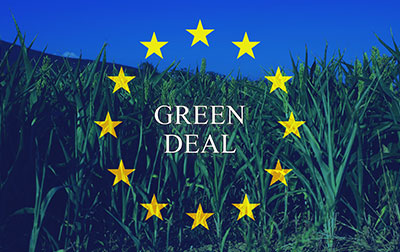Geopolitical landscape in Europe: what does the future hold?

Historically, Europe has been at the forefront of adapting policies toward the energy transition. In 2019, it launched the European Green Deal with a goal of becoming the first climate-neutral continent. However, the Inflation Reduction Act (IRA) passed in the United States in 2022, coupled with an energy crisis in Europe exacerbated by the Russian war with Ukraine, have altered the political landscape.
The IRA and the Green Deal will drive the economies on both continents for the next several years, changing the status quo in terms of competition, market capital, technological development, and strategy.
The incentive-laden IRA earmarks $370 billion to accelerate investment in clean energy technologies in every sector of the US economy. The Green Deal appropriated €1 trillion to decarbonize its economy. While both plans focus on achieving the goals set forth by the 2015 Paris Agreement – significantly reducing greenhouse gas (GHG) emissions by 2030 and achieving net-zero by no later than 2050 – there are distinct differences. The IRA, for example, earmarks protectionist subsidies and tax credits for goods wholly or partially manufactured or assembled on America soil. There is concern among EU nations that these types of “Buy American” incentives could lure investments away from Europe, or even entice companies to relocate to the US.
Industries operating in Europe’s power sector, under the new framework of rules, will need to adapt. The EU’s Green Deal is already a structured and comprehensive program and could benefit by borrowing from the IRA to streamline regulations and promote supply rather than demand only. On the other hand, the EU depends too much on free trade to be able to respond at the same level as the protectionist aspect of the IRA.
Companies operating, or wishing to participate, in the energy transformation in Europe will be challenged by this scenario. The EU needs to encourage, and provide funding for, the development of local supply chains and manufacturing in several strategic areas, including:
- Primary renewable energy sources: Providing funding and premiums for power sources such as solar, geothermal, and wind will help stimulate supply and investment.
- Hydrogen: Subsidizing the replacement of natural gas with hydrogen for household heating and industrial use is essential if Europe is going to reduce its dependency on imports.
- Developing infrastructure: Funding and initiatives are needed to ensure connectivity between regions and countries for the distribution of renewable energy.
We are involved in hybrid power projects around the globe and have experience in all aspects of renewable energy, including wind and solar. Our experts, Gustavo Gilberti, Saleha Habib, and Isadora Martins, in addition to analyzing what the EU’s response to the IRA should be – discuss in a detailed paper viable ways for Europe to transition to green energy. We’ve partnered with clients seeking net-zero solutions around the world. We can help you too.
For an in-depth analysis, click here: The EU Green Deal in Light of the IRA and the Geopolitical Landscape: What does the future hold for Europe's Power Sector?

Gustavo Gilberti
Process Consultant and Engagement Manager, Advisory
Gustavo is a chemical engineer with a background focused on mineral and metal processing, including decarbonization technologies in the entire metals value chain, from process to logistics. He holds a Masters in International Supply Chain Management and has been involved in numerous studies on the methodology for reducing carbon footprints. Gustavo is passionate about the energy transformation and through his role in our Advisory team works closely with our power team.